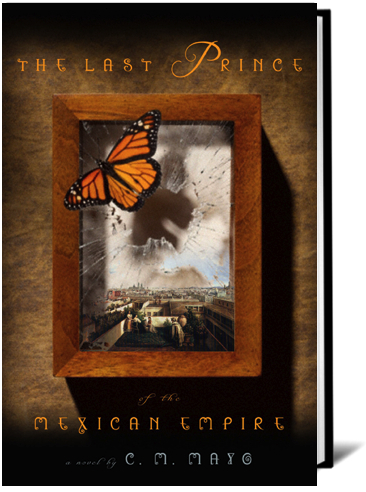|
The Last Prince of the Mexican Empire A novel based on the true story |
|
|
C.M. Mayo < Books < The Last Prince of the Mexican Empire < Book Groups <
or C.M. Mayo < Other Publications < Essays & Articles <
|
Apart from controversy, there's nothing better than some yummy cake and jolt of coffee to get a book group going. For The Last Prince of the Mexican Empire, my novel based on the true story of 19th century Mexico, I beg you, skip those gloppy nachos and so very twentieth-century-American-tourist "margaritas"; they would not only put everyone to sleep, but they would be no more appropriate than, say, hamburgers and Pepsi for Gone with the Wind. May I suggest some café de olla and Mrs. Yorke's raisin cakes? Recipes follow. Who is Mrs. Yorke, and what is she doing in a novel about Mexico? She's the queen of Mexico City's American society circa 1865, and based on a real person, the Louisiana-born wife of a banker. She is also the mother of Sara Yorke Stevenson, then a little girl, who in fact grew up to become a leading archeologist and author of the justly famed memoir, Maximilian in Mexico: A Woman's Reminiscences of the French Intervention 1862-1867. You can read about Mrs. Yorke and her daughter, along with the whole "tussie-mussie," that is, the novel's cast of dozens more Americans, Frenchmen, Austrians, Italians, Belgians, Englishmen, Spaniards, Hungarians, Prussians, and yes, of course, many Mexicans here. (Strictly speaking, the most appropriate cake for this novel would have to be Doña Juliana de Gómez Pedraza's. That's right, Mexico experts, she's none other than the widow of Gómez Pedraza, two-time President of Mexico in that wacky merry-go-round of 19th century Mexican politics. Though Doña Juliana plays a far more important role in the novel than her friend Mrs. Yorke, alas, her recipe requires overgenerous quantities of lard and, as baked by Chole, her hateful and elderly cook, the crust would come out burned and the middle gooey.) Moving beyond cakes, herewith a few more toothsome items from the novel that would be simple to prepare and serve: Mrs. Green's boiled asparagus
with butter, salt and white pepper If you want things to get a little more exciting, you might also consider serving: Italian pink champagne (served
at the Emperor Maximilian's Imperial Balls) The two recipes: CAFE DE OLLA Brew a pot of coffee. Stir in some piloncillo* and as much cinnamon as you can stand. A sprinkle of ground cloves. A big chunk of chocolate (the darker the better). Stir over low heat until blended. Ladle the café de olla (scooping chocolate from the bottom) into earthenware mugs. *A cone of molasses and spices. Cover with a tea towel before you whack it with a hammer; then let a piece of it melt in the coffee. If you're nowhere near an Hispanic grocer, a good (if less toothsome) substitute is brown sugar. MRS. YORKE'S RAISIN CAKES Steep raisins in cognac for several
hours. Add toasted and sliced nuts of whatever kind happen to
be handy. (Drain raisins. Save the cognac for marinating duck.
But don't worry about the duck because there is no duck.) In
a separate bowl mix 2 cups flour, big dash of cinnamon, petit
dash of clove, trés petit dash of nutmeg, and a teaspoon
of baking powder. In a second bowl, beat one egg, dash of milk,
1/2 cup softened butter. Then, oh so gently, as if to a largo
by Schubert in a minor key, with just enough effort to evenly
distribute the raisins, stir it all together. Spoon batter into
greased muffin tins. Bake until fork tines come out clean. Once
the cakes have cooled, top each with a pat of honey and a flower
from your garden. Serve on your fanciest china. And if a few
plates are chipped? C'est la vie. |
|
"Mayo's reanimation of a crucial
period in Mexican history should satisfy history buffs and those
in the mood for an engaging story brimming with majestic ambition.
-- Publisher's Weekly "a swashbuckling, riotous good time, befitting the fairy-tale promise of the opening sentence" -- Austin American-Statesman "Mayo’s cultural insights are first-rate, and the glittering, doomed regime comes to life" -- Library Journal "I have read a few sweeping historical novels that have remain inside of me forever. Tolstoy's War and Peace is one of those, Dickens's A Tale of Two Cities is another, Pasternak's Doctor Zhivago is another, and now The Last Prince of the Mexican Empire is another." -- Mexico Connect |
|
|
|
|

